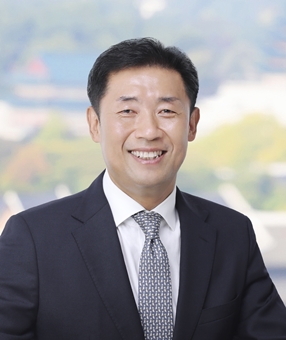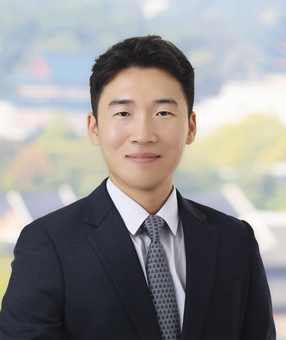On February 27, 2025, the (current) 22nd National Assembly of the Republic of Korea (“Korea”) passed the long-awaited Special Act on the Promotion of Offshore Wind Power Distribution and Industrial Development (the “OSW Promotion Act”).
The OSW Promotion Act (which will now be sent to the Ministry of Government Legislation for their preparation of a draft promulgation notice and will undergo (what is expected to be largely perfunctory) deliberation and signing by Korea’s acting prime minister and relevant members of the State Council) is expected to be officially adopted as Korean statutory law within 15 days on signing of Korea’s acting president and publication in the Official Gazette.[1] Thereafter, the OSW Promotion Act’s operative provisions (with one notable exception mentioned below) would be effective from the first anniversary of its official promulgation.
The OSW Promotion Act aims to create a more streamlined approach to Korea’s currently balkanized offshore wind power development licensing and permitting process, and will replace Korea’s existing “open door” policy for offshore wind power development (whereunder site selection and early stage project development is left largely to the whims of project developers) with a government-directed and facilitated process. Offshore wind power developers that have already achieved a certain level of project development may continue developing their projects under the existing regulatory regime (and may also apply for inclusion in the government-designated development zone scheme newly-established by the OSW Promotion Act).
Most details regarding the procedures and guidelines for implementing the new government-directed siting and early stage development support (as well as the administration of the newly-created OSW Power Generation Committee defined below) are expected to be included in an Enforcement Decree that will, in principle, be published prior to the first anniversary of the OSW Promotion Act’s promulgation.[2] Key elements and implications of the OSW Promotion Act (which combines features of no less than seven related National Assembly bills) are described further below.
|
1. |
Summary of Key Provisions |
|
Issue |
Description |
||
|
Offshore wind power generation projects (“OSW Projects”) may only be developed in power generation zones (“Power Generation Zones”) designated by Korea’s Ministry of Trade, Industry and Energy (the “MOTIE”) (subject to the exceptions noted below). |
||
|
A special committee comprised of the Prime Minister and representatives from key regulatory bodies overseeing the licensing and permitting of OSW Projects including the MOTIE, Korea’s Ministry of Oceans and Fisheries (the “MOF”), Ministry of Environment (the “MOE”) and Ministry of National Defense (the “OSW Power Generation Committee”) will be established to coordinate the full array of OSW Project permitting procedures. |
||
|
The following existing OSW Project developments may continue development under the existing regulatory regime:
|
||
|
OSW Projects that are eligible to continue development under the existing regulatory regime have the option (but not the obligation) to apply to the MOTIE for inclusion in a Power Generation Zone, which application will be granted on satisfaction of to-be-determined conditions. |
||
|
The MOTIE shall consult with the local governmental authority having jurisdiction over a Power Generation Zone prior to approving any implementation plan with respect to OSW Projects proposed to be developed therein. |
||
|
|
||
|
|
||
|
The MOTIE may, on application from the applicable local governmental entity and confirmation of the OSW Power Generation Committee, designate all or a part of an integrated complex as a Power Generation Zone.[6] |
||
|
Operative provisions of the OSW Promotion Act will generally be effective from the first anniversary of its promulgation, provided that:
|
|
2. |
Power Generation Zone Designation Process |

Although most applicable licenses and permits may be deemed to have been obtained through the above newly-established fast-track process, environmental impact assessments and sea area utilization impact assessments (which may, as expected to be further explained in the forthcoming related Enforcement Decree, be replaced with “environmental evaluation reports”) must be submitted together with the developer’s implementation plan. These reports remain subject to MOE and MOF review and may still entail feedback and follow-up requests from the MOE and MOF, respectively.
|
3. |
Implications |
-
Immediate cessation of new PWOPs: Although most provisions of the OSW Promotion Act will not be effective until a year following its official promulgation, the restriction on the issuance of new PWOPs (which effectively closes Korea’s existing “open door” policy) will be effective immediately on promulgation. Going forward, any OSW Projects that have not already obtained a PWOP may only be developed following selection to participate in a government-designated Power Generation Zone.
-
Power Generation Zone fast-track permitting: OSW Projects selected to participate in government-designated Power Generation Zones will benefit from a fast-track licensing and permitting process that will grant deemed attainment of up to 28 development-related licenses and permits, although the actual shortening of development timelines remains to be seen.
-
One-stop shop (probably) streamlines development: The establishment of the OSW Power Generation committee as a “one-stop” authority overseeing most aspects of the development of OSW Projects will likely simplify the currently complex regulatory process of developing OSW Projects, although the actual effects (and many related details) remain to be seen.
-
A leg up for government-led projects: Certain provisions of the OSW Promotion Act establish grounds for preferential support to OSW Projects developed by state-owned enterprises and quasigovernmental institutions, which will likely increase GenCo participation in OSW Project development.
-
Protection of preferential rights requires clarification: Although the intent of the OSW Promotion Act appears to be to preserve OSW Project developers’ existing priority rights to development within the “effective areas” of valid existing PWOPs obtained prior to its promulgation date (i.e., an offshore area within a seven-kilometer radius of the relevant wind data measurement device), related details and possible conflicts with designated “Exploratory Areas” require further clarification.
As is typical in Korean legislation generally, the OSW Promotion Act is drafted at a very high level of detail, and more specific provisions remain to be set out in the related Enforcement Decree to be prepared by the Office of the President and the MOTIE, hence it will be important to monitor news relating to the Enforcement Decree publication and any related public comments period.
[1] President Suk Yeol Yoon’s ongoing impeachment proceedings (and the related political fallout) will result in Sang-mok Choi, Minister of Korea’s Ministry of Economy and Finance (the “MOEF”), playing the dual role of acting prime minister and acting president at the expected time of official promulgation of the OSW Promotion Act. Acting presidential veto (which may (and likely would) be overridden by the National Assembly) is theoretically possible but most analysts consider this highly unlikely.
[2] Given that related issues have been under discussion by policy makers for some time now, most analysts predict that (in spite of current domestic political distractions) achieving this timeline should not be problematic, and that the government may announce and solicit industry feedback on a draft Enforcement Decree in as soon as six months following promulgation of the OSW Promotion Act.
[3] In other words, OSW Projects that obtain PWOPs prior to the promulgation date of the OSW Promotion Act may continue with their planned development under the existing regulatory regime, regardless of the OSW Promotion Act’s general restriction on developing OSW Projects outside of Power Generation Zones, so long as they subsequently obtain EBLs within three years from the promulgation date.
[4] “Public waters” generally refers to the area between the Korean coastline to the outer limit of the exclusive economic zone 200 nautical miles from such coastline.
[5] “집적화단지” in Korean.
[6] As of February 2025, the 1.4GW Southwest Complex (Stage 1) is Korea’s only designated integrated complex. The Shinan County Government applied to the MOTIE for designation of the 3.2GW Shinan Offshore Wind Power Complex as an integrated complex in 2024, but as of this writing the MOTIE has not confirmed such designation.










